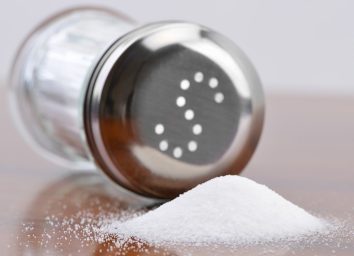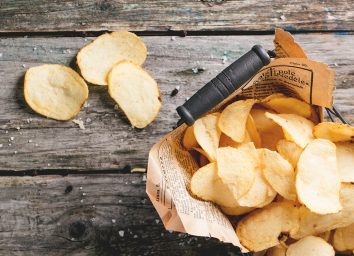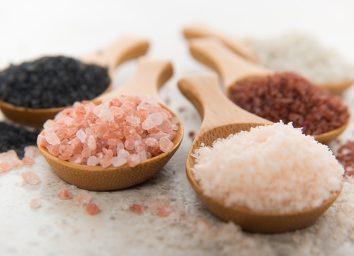5 Ways You're Using Salt Wrong
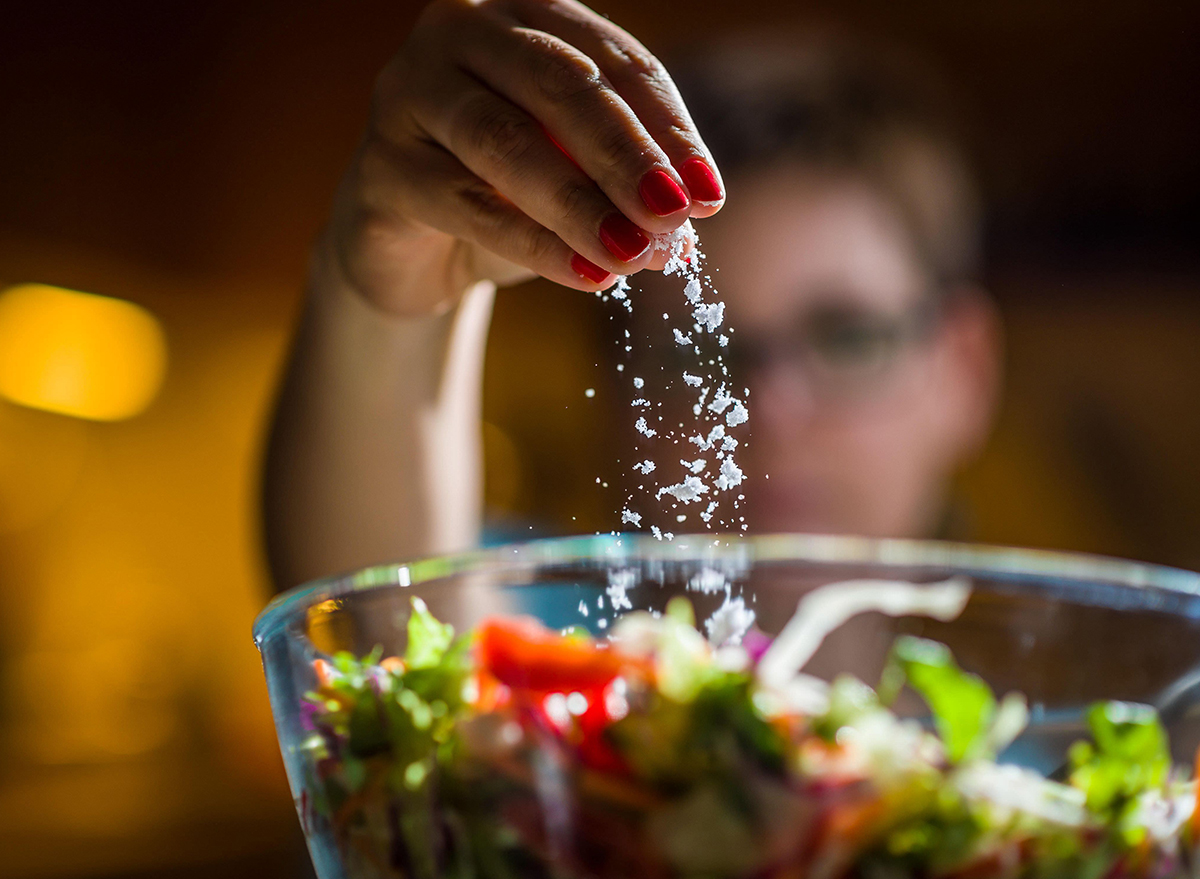
Salt is the number one most important ingredient when it comes to adding flavor to food. But if you think there isn't much to throwing a few pinches of it in that soup or meat marinade, you're sorely mistaken. It's easy to underestimate salt for its simplicity, but this powerful ingredient is anything but. And it can definitely be used improperly. Before you cook your next meal, learn more about the magic of using salt to its full potential, and you'll instantly become a better cook.
Here are five mistakes most people make with salt—and they can ruin the best of ingredients. And don't forget to sign up for our newsletter to get the latest food news and recipes delivered straight to your inbox.
You're not using enough of it
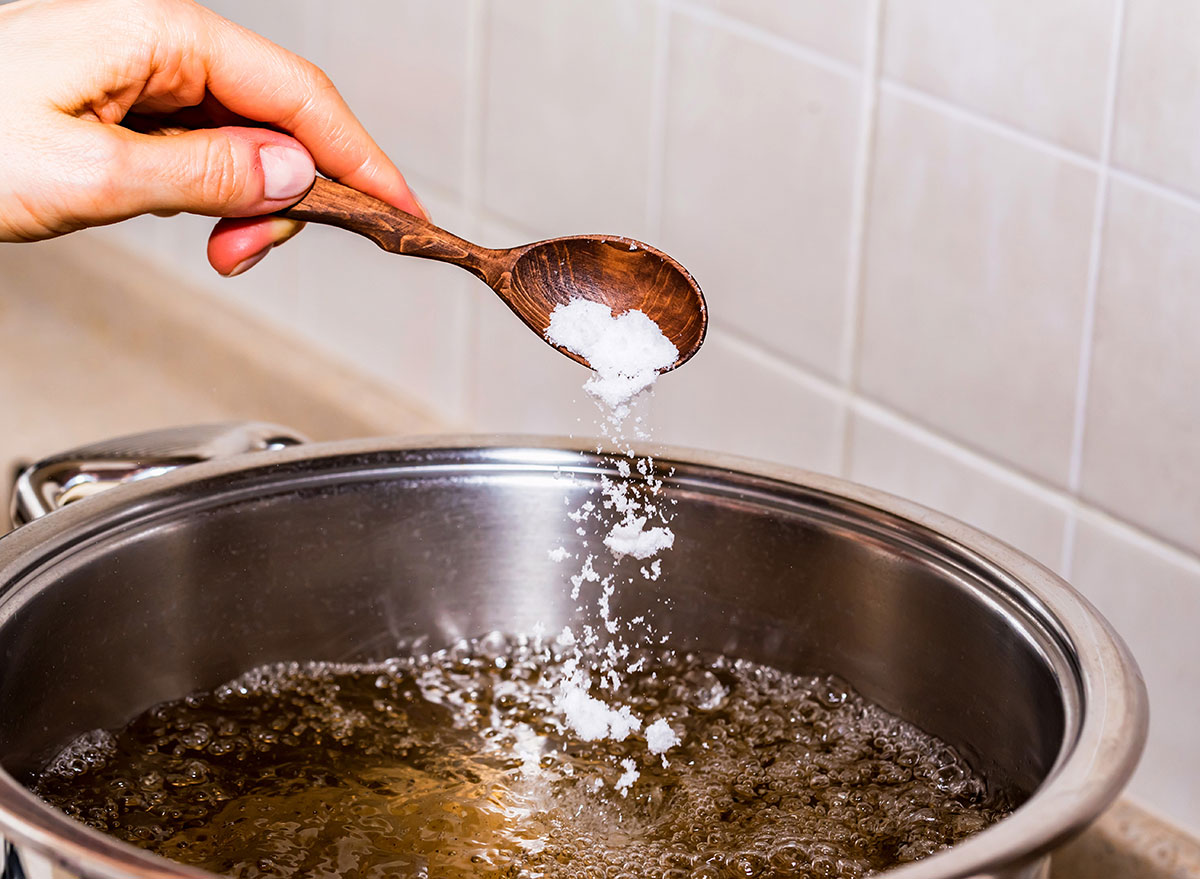
One of the main reasons why restaurant food always tastes so good is because chefs are not afraid of the salt container. While this might have implications for your blood pressure down the line if you dine out every night, there's surely a happy medium between the conservative pinch most home cooks use and the restaurant chef's hefty handful. Not every dish needs the same amount of salt, however. Pasta water should be salted until it tastes like seawater, but a dish that contains "naturally" salty ingredients (like bacon or salted peanuts) doesn't need as much salt. Here are 25 Foods High in Sodium You Should Watch Out For.
You're not aware of how salt interacts with flavor
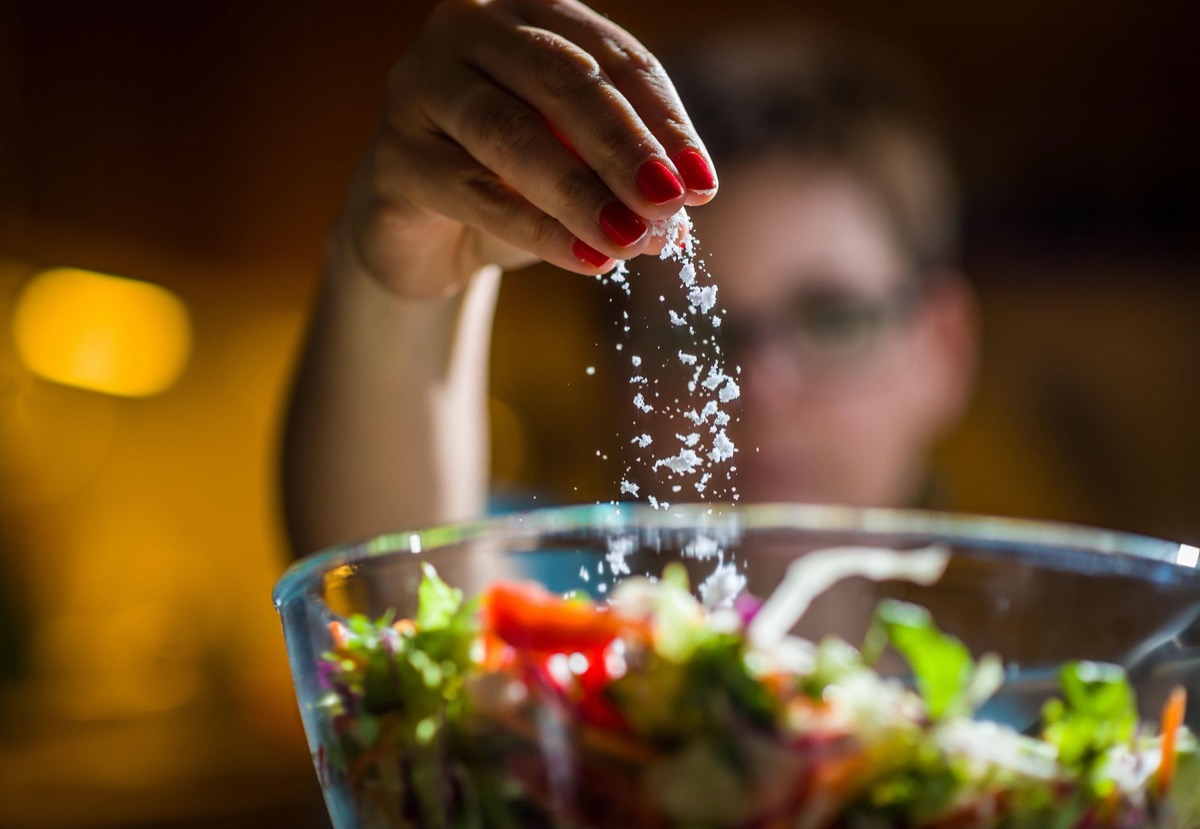
Any treatise on salt is incomplete without the perspective of the great chef Samin Nosrat, author of Salt, Fat, Acid, Heat and host of the hit TV show by the same name. In a New York Times article, Nosrat calls out "the transformative power of salt" and avows that without salt, food would be "adrift in a sea of blandness." It plays down the bitterness and amps up other flavors in order to create harmony throughout whatever you're cooking—or baking, as salt is an integral part of baked goods as well.
In addition to how it interacts with flavor, the timing of when you use it matters. For example, you have science to thank for why you should add it to pasta water after the water comes to a boil. And if you're seasoning a sauce that's going to reduce dramatically, wait until the end to season it, otherwise you might be left with a saltier flavor than you intended. Ever wondered Why Sweet and Salty Foods Taste So Good Together?
You're only using one type of salt
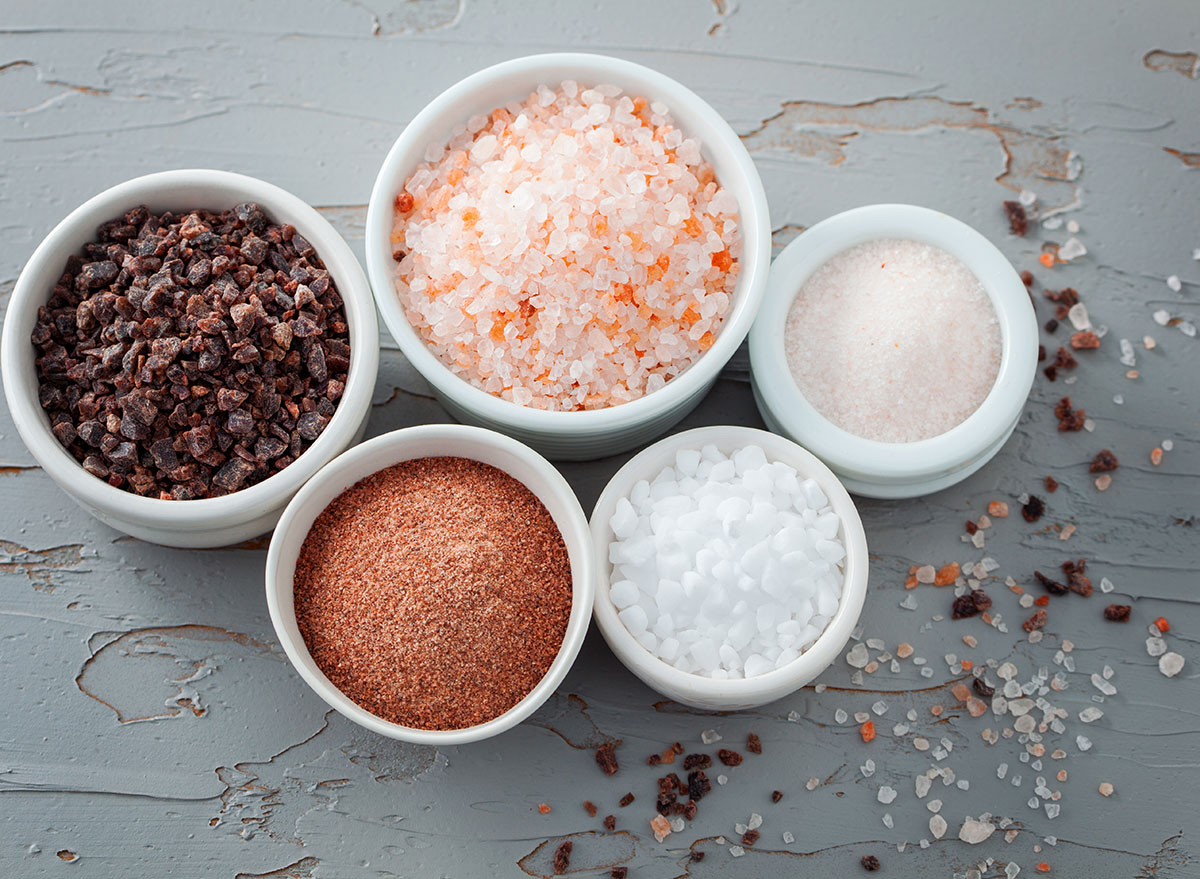
If you were making a curry or stir-fry, you wouldn't use one spice to flavor it—and the same principle applies to salt. Table salt, kosher salt, and sea salt are not the same, and you might find yourself using more than one kind in the same dish. They're all variations on an NaCl theme, but Nosrat teaches us about how the size of the crystal has an impact on the taste, with smaller crystals dissolving quickly (and therefore tasting more "salty") and larger ones leaving a lingering effect.
Table salt has the finest crystals, and is a solid go-to for salting pasta water, but often has anti-caking ingredients added to it that can leave a metallic taste. It's followed by the slightly less refined (and more granular) kosher salt, which is typically what you'll find by the boxful in restaurant kitchens. Sea salt—which is what remains from seawater once the water part is stripped away—is the thickest of all. When in doubt, finish with flaky sea salt. Its craggy texture ensures that it clings to whatever you sprinkle on, from chocolate chip cookies to avocado toast. For a colorful finish, opt for pink himalayan salt, which gets its color from the presence of minerals. Be sure to avoid these 50 Ways You're Constantly Ruining Your Food.
You're only using it to season food
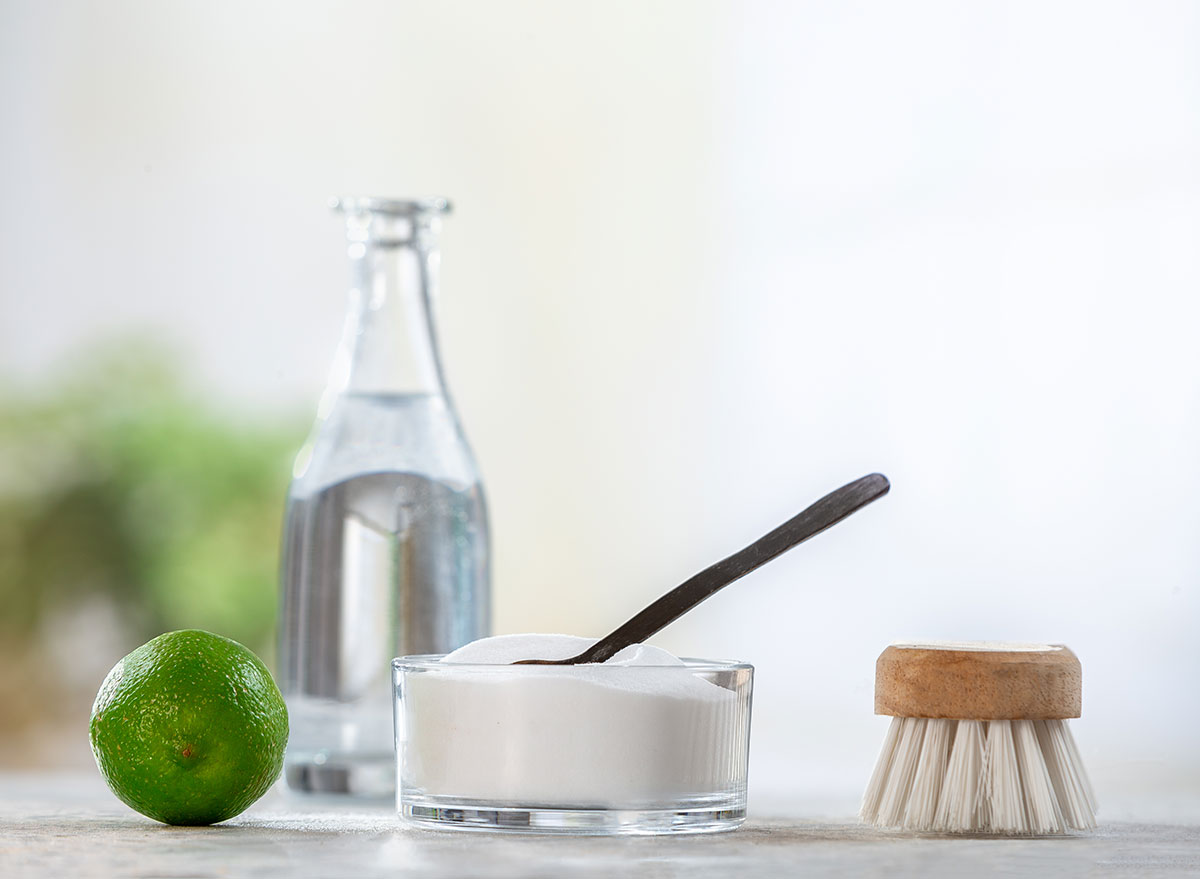
That's the obvious end goal, but salt is more versatile than it seems. Salt is one of the original preservers, which is why it's crucial for crunchy pickles or preserved lemons. You can also try salt-baking a fish or a hearty root like a potato or rutabaga. Among salt's wide array of non-culinary uses, it can get the smell of garlic out of your fingers after you've prepped a batch of garlic-lemon spinach, keep cut apples from browning, and get wine spill stains out of a carpet. And, of course, you can use it to coat the rim of a margarita glass. For bonus points, combine it with chili powder and a touch of sugar before you do so. Check out these 50 Best Kitchen Cleaning Tips.
You're not storing it right
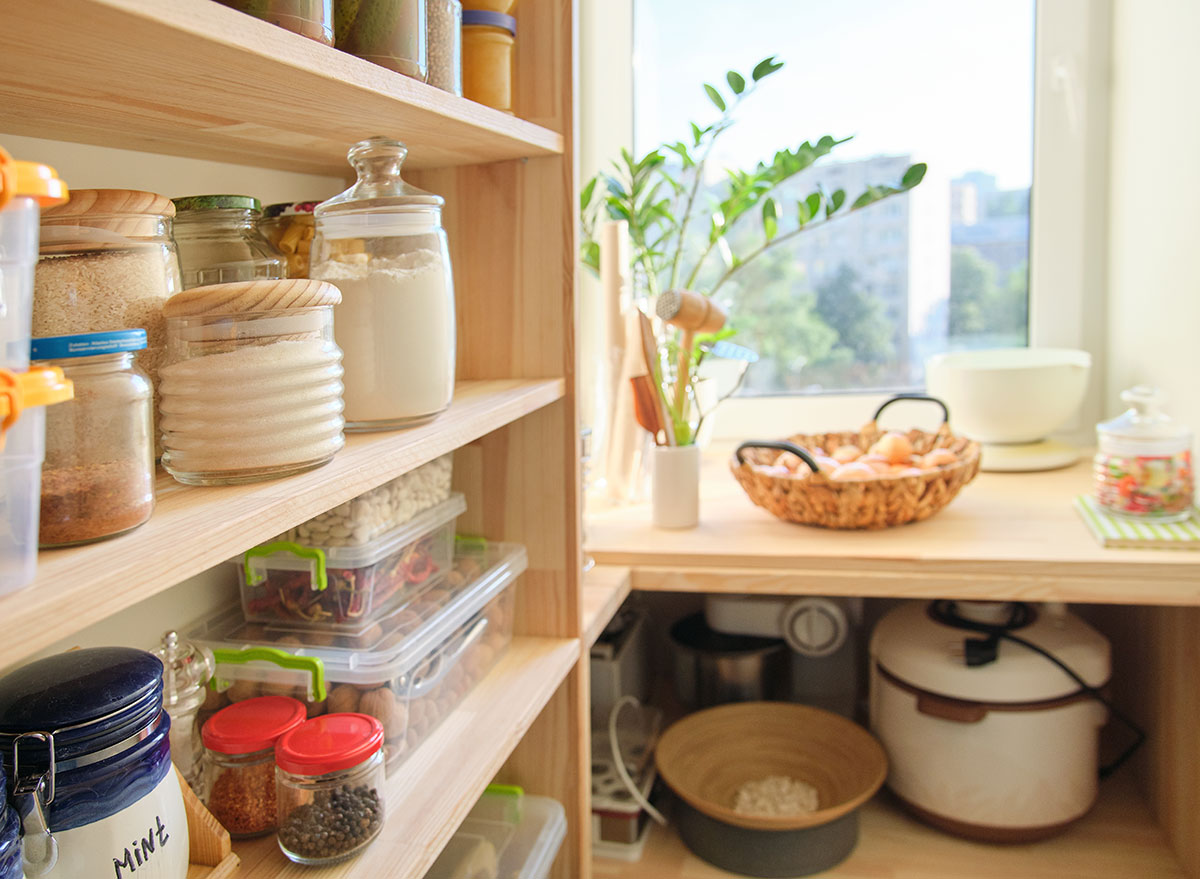
Store your salt in a cool, dry place, as the main goal is to protect it from moisture in the air. Due to its chemical makeup, the ions in the salt molecules attract water molecules (think of how easy it is to make a saltwater solution). If you have a specialty salt, like one infused with herbs or spices, it'll lose flavor faster than pure salt. This doesn't mean all your salt needs to be squirreled away in a dark pantry. One clutch location for a pinch bowl of salt is right next to the stovetop, so you can season as you go without having to run across the kitchen to get what you need. As Nosrat says, salt "makes food taste more like itself," so do yourself a favor and keep it handy through all your kitchen endeavors. Check out these 7 Foods You've Been Storing Wrong Your Entire Life.
